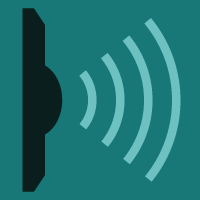Topic Editors

Nondestructive Testing and Evaluation
Topic Information
Dear Colleagues,
Nondestructive testing and evaluation (NDT&E) is one of the most important and widely used techniques for determining the quality and safety of materials, components, devices, and structures. The NDT&E technologies include ultrasonic (UT), magnetic particle (MT), magnetic flux leakage (MFLT), eddy current (ECT), radiation (RT), penetrant (PT) and visual testing (VT), along other testing techniques used for industrial applications. This Topic focuses on the recent advancements in NDT applications used to support economics, people’s quality of life and sustainability in civil engineering.
This Topic invites authors to submit high-quality research articles that cover the different topics of NDT&E progress. The subjects that will be discussed focus not only on the newest methods, technologies and applications, but also on the progressive results of future work.
Dr. Youngseok Lee
Prof. Dr. Ho Kyung Kim
Dr. Zheng Tong
Topic Editors
Keywords
Participating Journals
| Journal Name | Impact Factor | CiteScore | Launched Year | First Decision (median) | APC | |
|---|---|---|---|---|---|---|

Journal of Imaging
|
3.3 | 6.7 | 2015 | 15.3 Days | CHF 1800 | Submit |

Journal of Nuclear Engineering
|
1.2 | 2.6 | 2020 | 36.2 Days | CHF 1200 | Submit |

NDT
|
- | - | 2023 | 24.8 Days | CHF 1000 | Submit |

Radiation
|
- | - | 2021 | 25.5 Days | CHF 1000 | Submit |

Buildings
|
3.1 | 4.4 | 2011 | 14.9 Days | CHF 2600 | Submit |

Applied Sciences
|
2.5 | 5.5 | 2011 | 19.8 Days | CHF 2400 | Submit |

Preprints.org is a multidisciplinary platform offering a preprint service designed to facilitate the early sharing of your research. It supports and empowers your research journey from the very beginning.
MDPI Topics is collaborating with Preprints.org and has established a direct connection between MDPI journals and the platform. Authors are encouraged to take advantage of this opportunity by posting their preprints at Preprints.org prior to publication:
- Share your research immediately: disseminate your ideas prior to publication and establish priority for your work.
- Safeguard your intellectual contribution: Protect your ideas with a time-stamped preprint that serves as proof of your research timeline.
- Boost visibility and impact: Increase the reach and influence of your research by making it accessible to a global audience.
- Gain early feedback: Receive valuable input and insights from peers before submitting to a journal.
- Ensure broad indexing: Web of Science (Preprint Citation Index), Google Scholar, Crossref, SHARE, PrePubMed, Scilit and Europe PMC.



